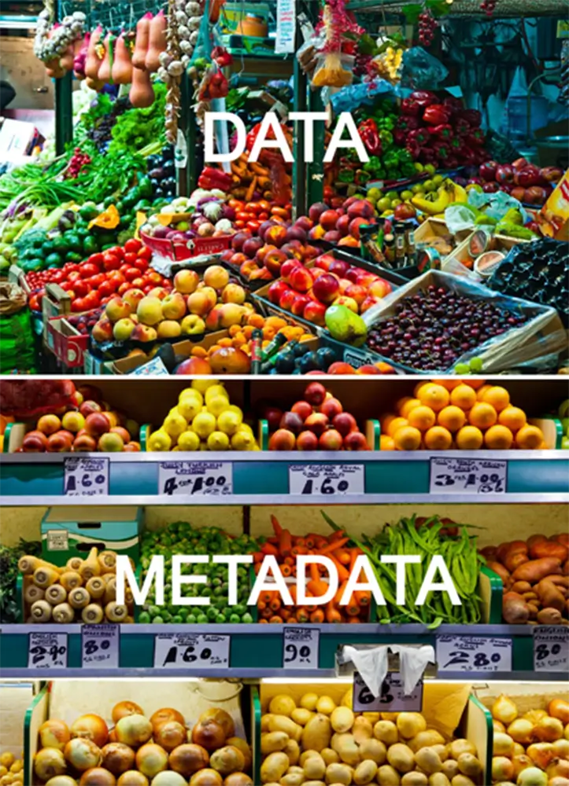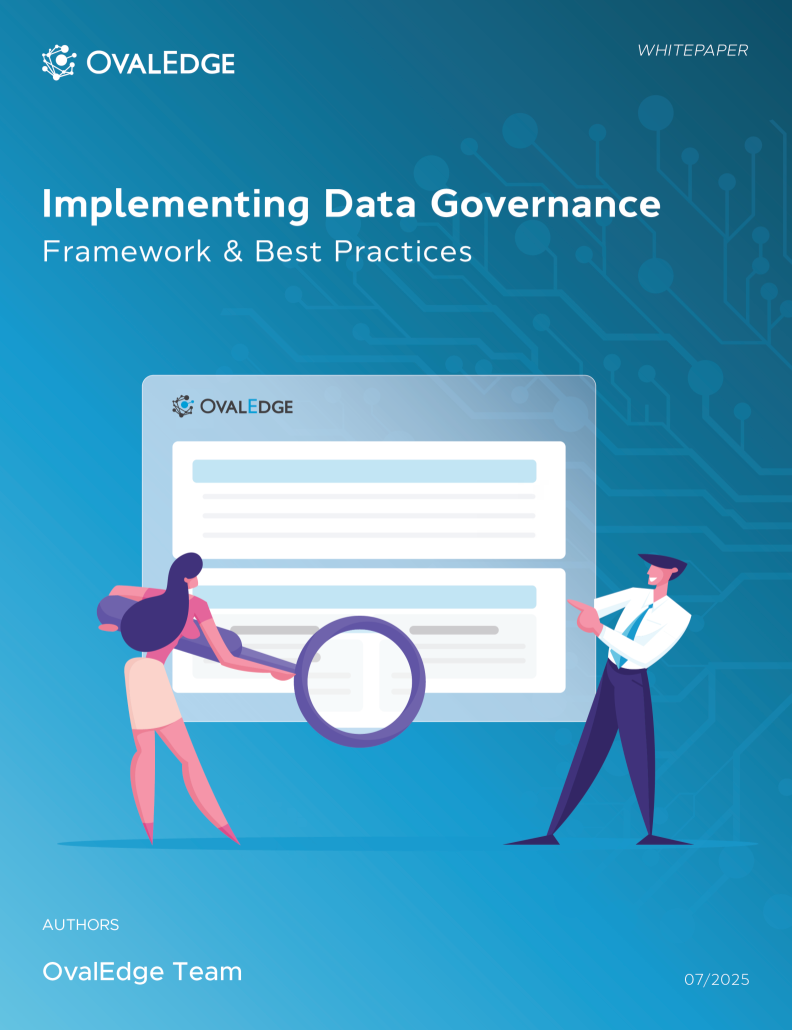Table of Contents

Why Data Governance & Metadata Management Work Better Together
Metadata management is a critical element of data governance that enables users to derive value from the data they have at their disposal. Beyond this, it enables business users to classify data sets and flag up sensitive or confidential information so as not to breach any existing privacy regulations.
Traditionally, metadata management was used to organize and classify data for compliance reasons, but in today's world, these classifications can also be used in access management, data discovery, and data quality management too.
Organizations increasingly recognize that effective data governance and metadata management are deeply interconnected disciplines that together unlock greater data value, quality, and compliance. Metadata provides essential context and definitions that enable data governance frameworks to be operationalized consistently and transparently.
By the time you finish reading this article, you’ll be equipped with knowledge of how best to manage your metadata and turn it into valuable business insights.
Need help convincing stakeholders of the importance of data governance? Download our free Data Governance Business Case Builder
What’s the Role of Metadata and Business Glossaries Within a Data Governance Framework?
Metadata and business glossaries play a fundamental role in a data governance framework by establishing a shared language and understanding across business and technical teams. Metadata documents the characteristics, origin, lineage, and usage of data assets, while business glossaries standardize terminology ensuring clarity and reducing ambiguity. Together, they help enforce policies, accelerate data discovery, and support regulatory compliance by making data more interpretable and trustworthy.
What’s Metadata and Metadata Management?
Metadata is essentially data about data. Metadata provides users with the information they need to put the data they are using into context, revealing the who, what, where, why, when, and how of a data asset. In general, metadata today is associated with web assets, but physical and other electronic data can have metadata associated with them too.
Common metadata elements in data include title, description, tags, categories, author, modification dates, lineage, and more. These elements provide crucial information about how data was created, how it was altered, who altered it, and what it can be used for. The easiest way to separate data from a data governance perspective is to split it into two categories, business metadata, and technical metadata.
Business metadata includes elements that indicate a certain business value and provide a broader context for business users. For example, this could include information on confidentiality, a clear definition of the term, or the class the term belongs to.
Technical metadata is focused on data transformation, structure, storage, size, and other related elements. For example, this could include information regarding the structure of the column or table that it is stored in, the name of the table, the size of the data asset, or the data definition language.
The first indexing systems, such as the paper referencing systems that used to exist in libraries used physical management systems. Later, search engines like Yahoo! and Google used electronic searches to find web pages.
Today, enterprise metadata management (EMM) can be completed manually or by using an automated system. Either way, metadata management should have the same outcome—to be able to answer common questions.

Related: What is Active Metadata Management? Definition & Benefits
Metadata in Data Governance
Metadata management is a key component of data governance because it addresses many of the core issues that governance initiatives are designed to combat. These include a lack of standardization, ambiguous data ownership, undefined data quality rules, data security concerns, compliance concerns, an absence of lineage, communication issues, categorization problems, and more.
When managed correctly, metadata can provide solutions that data teams can employ to tackle these issues. For example, metadata can be used to mitigate risk because it enables organizations to categorize data so users can determine whether the information is sensitive or confidential.
Identifying data owners through metadata enables data teams to assign responsibility to different data sets, and metadata is critical for creating a business glossary and standardizing terms and definitions too.
It enables data teams to track lineage and in turn clean and improve the quality of data. Essentially, for data governance to work successfully, you need to manage your metadata well.
In simple words, Metadata governance refers to the policies, standards, roles, and processes that ensure metadata is created, maintained, and used in a consistent, accurate, and secure manner. It is a subset of data governance focused specifically on managing the metadata lifecycle and quality. Effective metadata governance reduces risks related to data misuse, promotes data stewardship, and underpins enterprise-level compliance efforts.
Related: A Step-by-Step Guide to Metadata Management
Enterprise Metadata Management
Enterprise metadata management (EMM) encompasses the holistic strategies, technologies, and organizational practices used to manage metadata across an entire organization. It integrates metadata from diverse sources into a centralized repository or catalog, enabling consistent management, enhanced data lineage, and seamless access. EMM supports diverse data governance objectives such as regulatory compliance, data quality improvement, and analytics enablement.
How to create an Enterprise Metadata Management Strategy within a Data Governance Framework?
Metadata management can’t work as a standalone strategy, because it has to be developed within the context of a data governance framework. When created and rolled out correctly, a data governance framework will integrate users with core data governance processes, make data-driven innovation part of company culture, and enable collaboration.
Fail to define and execute a data governance framework before you set out to develop a plan for your metadata, and you’ll struggle to get your strategy off the ground.
1. How to Build a Data Governance Framework?
As we mentioned earlier in this article, building a successful data governance framework is about integrating data users with data processes. The ultimate goal is to create a harmonious link between these two critical business assets and drive data-centric growth.
The first step should be to find and document all of the data that exists in your organization. After this, you need to identify the data owners and set up a group to manage the data governance process and a governance committee to ensure all the proper stakeholders are involved. Ensuring transparency and unbiased oversight is crucial at every stage of your data governance initiative.
A framework should include several key elements that make it easy for users to access data, standardize data terms and definitions, promote and facilitate data literacy, and improve the quality of data assets.
Related: Data Governance and Data Quality Working Together
Collectively, every element of your data governance framework will foster a data-driven culture that encourages collaboration and the use of data to innovate. And, the key to creating a data governance framework such as this is patience and planning.
Don’t try to implement data governance initiatives across your organization in one hit. It won’t work and will likely lead to failure. Instead, focus on the areas of your businesses that would benefit most from data-driven innovation and use this as a starting point for your data governance strategy.
2. How to Design a Compatible Metadata Management Strategy?
Once you have established a comprehensive data governance framework, you need to design a metadata management strategy to maximize the value of your data. As with your data governance framework, this strategy will be unique to your organization, but you should follow the same general procedure we'll lay out in this blog post.
The first step is to create and adapt a metadata model that fits with the purpose and focus of your organization. There are several existing models and frameworks available, but there is no one-size-fits-all approach. The process of developing a metadata model will be overseen by a data architect who will decide which data will achieve which business outcome and structure the model accordingly.
The next stage is to appoint a metadata manager. They will be responsible for ensuring that the initiatives you develop and the processes you design will be carried out correctly. They must have a great deal of technical expertise to be able to commit to this role effectively so think about hiring a well-qualified candidate instead of assigning the role to an existing team member.
Not all metadata is the same, so another important part of any metadata management strategy is to separate and categorize metadata by type.
Another key area of focus is to create access, sharing, and governance policies for the metadata in your organization. Once these processes are in place, you can begin to use your metadata to achieve the most from your data governance initiative.
What is Metadata Management?
Metadata management is the systematic approach to collecting, storing, and governing metadata about data assets. It enables organizations to catalog types of data, their relationships, definitions, lineage, and quality metrics, ensuring data can be easily found, understood, and trusted by users. Modern metadata management platforms incorporate automation, AI, and collaboration features to enhance metadata accuracy and usability.
Conclusion
Effective data governance is paramount for organizations striving to harness trusted, compliant, and actionable data. By integrating metadata management and business glossaries, enterprises can foster a shared understanding and improved data stewardship, paving the way for scalable and sustainable governance practices. Leveraging AI-driven capabilities like those offered by OvalEdge enhances automation, monitoring, and risk mitigation across the data lifecycle. To truly unlock business value and regulatory compliance, organizations should align their data governance strategy with modern technological solutions and embed it deeply within their organizational culture.
To explore how OvalEdge’s comprehensive data governance platform can empower your organization with AI automation, seamless integration, and business user empowerment, consider scheduling a personalized demo tailored to your specific challenges and goals. You can book a live demo here:
FAQ's
Q1: What’s the role of metadata in data governance?
Metadata provides essential context and definitions that enable policies, standards, and data stewardship efforts to be effectively applied across data assets.
Q2: How do business glossaries aid data governance?
They standardize terminology ensuring a shared understanding among stakeholders, reducing misinterpretation and supporting consistent data use.
Q3: What is metadata governance?
Metadata governance is the framework of policies and processes to ensure metadata quality, security, and compliance.
Q4: How does enterprise metadata management benefit organizations?
EMM centralizes metadata management across systems, improving data quality, lineage tracking, regulatory compliance, and analytic insights.
Q5: What tools support effective metadata management?
Metadata management tools provide automated metadata harvesting, data catalogs, workflow orchestration, and AI-driven recommendations to enhance metadata accuracy.
Related: Building an Effective Data Governance Framework
What you should do now
|
OvalEdge recognized as a leader in data governance solutions
.png?width=1081&height=173&name=Forrester%201%20(1).png)
“Reference customers have repeatedly mentioned the great customer service they receive along with the support for their custom requirements, facilitating time to value. OvalEdge fits well with organizations prioritizing business user empowerment within their data governance strategy.”
.png?width=1081&height=241&name=KC%20-%20Logo%201%20(1).png)
“Reference customers have repeatedly mentioned the great customer service they receive along with the support for their custom requirements, facilitating time to value. OvalEdge fits well with organizations prioritizing business user empowerment within their data governance strategy.”
Gartner, Magic Quadrant for Data and Analytics Governance Platforms, January 2025
Gartner does not endorse any vendor, product or service depicted in its research publications, and does not advise technology users to select only those vendors with the highest ratings or other designation. Gartner research publications consist of the opinions of Gartner’s research organization and should not be construed as statements of fact. Gartner disclaims all warranties, expressed or implied, with respect to this research, including any warranties of merchantability or fitness for a particular purpose.
GARTNER and MAGIC QUADRANT are registered trademarks of Gartner, Inc. and/or its affiliates in the U.S. and internationally and are used herein with permission. All rights reserved.


.webp)


